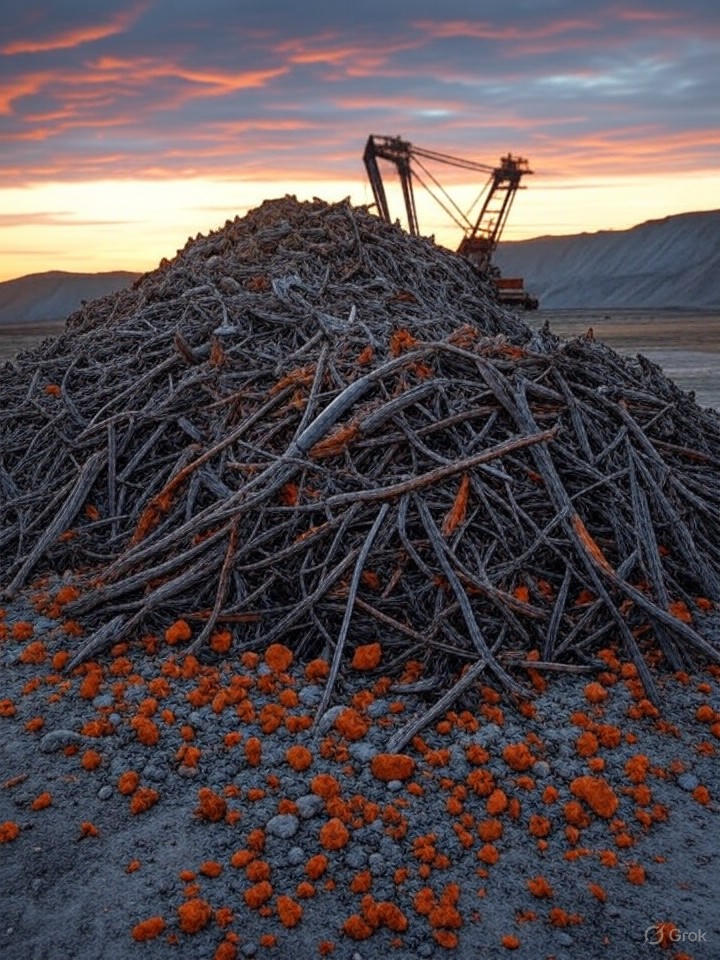A Hidden Treasure in Mine Waste
In a revelation that could reshape America’s approach to securing vital resources, a new analysis published in the journal Science indicates that the United States is already extracting all the critical minerals it requires for energy, defense, and technology sectors—but discarding them as waste. According to the study, minerals like cobalt, lithium, and rare earth elements are present in the tailings and byproducts of existing mining operations across the country. This oversight represents a missed opportunity to bolster domestic supply chains without the need for new mines, potentially alleviating geopolitical tensions over resource dependency.
The research, led by experts from the Colorado School of Mines and detailed in a report shared via Phys.org, quantifies the scale of this waste. Annually, U.S. mines produce enough discarded lithium to power 10 million electric vehicles, alongside substantial quantities of other essential materials. This comes at a time when demand for these minerals is surging due to the transition to renewable energy and advanced manufacturing.
Quantifying the Losses
Industry insiders have long suspected inefficiencies in mineral extraction, but this analysis provides concrete data. By examining waste streams from coal, copper, and other traditional mining sites, the study reveals that recovery technologies could capture these minerals economically. For instance, tailings from copper mines often contain cobalt, a key component in batteries, which is currently being dumped rather than processed.
Further insights from Grist highlight that the U.S. discards vast quantities of manganese and other elements critical for steel production and electronics. The economic implications are profound: recycling these waste streams could reduce reliance on imports from China, which dominates global refining capacity for many of these minerals, as noted in a Council on Foreign Relations overview.
Policy and Technological Implications
The findings align with recent government initiatives, such as the Department of the Interior’s efforts to recover critical minerals from mine waste, announced in July 2025. This push, detailed on the U.S. Department of the Interior’s website, aims to integrate advanced separation techniques into existing operations, potentially unlocking billions in value.
However, challenges remain. Mining companies must invest in new processing infrastructure, and regulatory hurdles could slow adoption. As Mining Technology reports, the initiative seeks to address national defense needs by tapping into domestic sources, reducing vulnerabilities exposed by global supply chain disruptions.
Geopolitical Ramifications
On the international front, this domestic potential contrasts with U.S. efforts to secure minerals abroad, such as deals in Africa and Ukraine, as covered by Reuters. By focusing inward, America could diminish China’s leverage in the critical minerals market, where Beijing controls much of the processing.
Experts argue that incentivizing waste recovery through tax credits or subsidies, similar to those in the Inflation Reduction Act, could accelerate progress. The analysis in Science underscores that with targeted investments, the U.S. could achieve self-sufficiency in critical minerals within years, transforming waste into a strategic asset.
Future Prospects and Industry Shifts
For mining executives and policymakers, the message is clear: innovation in extraction isn’t just about digging deeper but smarter. Companies like those profiled in Mother Jones are already exploring pilot projects to extract lithium from coal ash, demonstrating feasibility.
Ultimately, this shift could redefine the sector, promoting sustainability while enhancing security. As demand for electric vehicles and renewable tech grows, harnessing mine waste offers a pragmatic path forward, ensuring the U.S. doesn’t continue throwing away its future.




 WebProNews is an iEntry Publication
WebProNews is an iEntry Publication